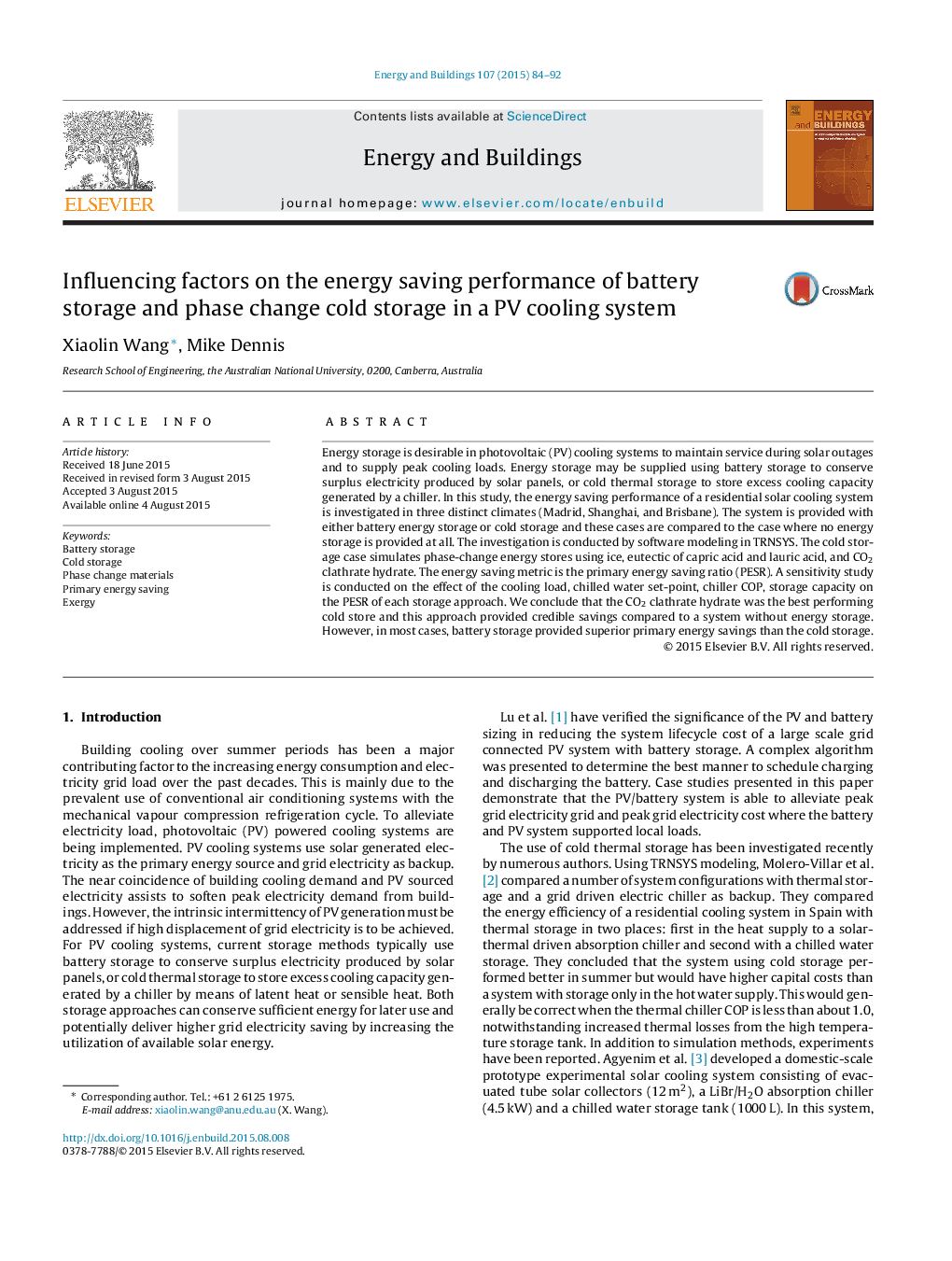| Article ID | Journal | Published Year | Pages | File Type |
|---|---|---|---|---|
| 262329 | Energy and Buildings | 2015 | 9 Pages |
•We study a PV cooling system for a residential building in three distinct climates.•We compare the energy saving of the system with either battery storage or cold storage.•The cold storage case simulates phase-change energy stores using different materials.•Influencing factors on the energy saving of each storage approach are investigated.
Energy storage is desirable in photovoltaic (PV) cooling systems to maintain service during solar outages and to supply peak cooling loads. Energy storage may be supplied using battery storage to conserve surplus electricity produced by solar panels, or cold thermal storage to store excess cooling capacity generated by a chiller. In this study, the energy saving performance of a residential solar cooling system is investigated in three distinct climates (Madrid, Shanghai, and Brisbane). The system is provided with either battery energy storage or cold storage and these cases are compared to the case where no energy storage is provided at all. The investigation is conducted by software modeling in TRNSYS. The cold storage case simulates phase-change energy stores using ice, eutectic of capric acid and lauric acid, and CO2 clathrate hydrate. The energy saving metric is the primary energy saving ratio (PESR). A sensitivity study is conducted on the effect of the cooling load, chilled water set-point, chiller COP, storage capacity on the PESR of each storage approach. We conclude that the CO2 clathrate hydrate was the best performing cold store and this approach provided credible savings compared to a system without energy storage. However, in most cases, battery storage provided superior primary energy savings than the cold storage.
